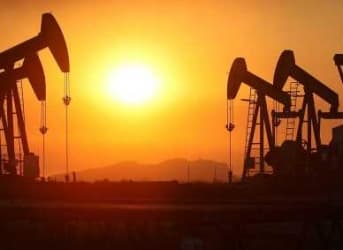
Everyone seems to agree that the world is running out of cheap oil. But how cheap is cheap? Until we know it’s hard to say exactly what the world is running out of, or indeed if it’s running out of it at all. Clearly what is needed is for someone to put a dollar value on cheap oil, and here I do my best to come up with a number.
Before we can start we need a definition of “cheap”. Webster’s defines it as “worth more than the price paid”, which is probably as good a definition as any, so we will use it. But how do we define when oil is no longer worth more than the price paid, i.e. not cheap? When the world stops buying it. There is of course no exact point at which this occurs; in theory oil will become progressively less “cheap” as the price rises and consumption growth will decrease progressively as a consequence. However, there will come a point at which the oil price becomes high enough to turn consumption growth negative, and for the purposes of analysis I’ve picked this as the “cheap” oil threshold.
Using this criterion we will now look briefly into the question of where this threshold might occur.
First the basic data for reference. Here’s a plot of world GDP, world oil consumption and oil price (West Texas crude) since 1965. Note that GDP and oil price are in current dollars:

Next is a plot showing the percentage of its income the world has historically spent on oil, calculated by dividing the value of the oil consumed by world GDP. Between 1965 and 1974 the world spent less than 2% of its GDP on oil. Between 1974 and 1980 the percentage quadrupled to 7.5%. Between 1980 and 1986 it fell back to 2%. Between 1986 and 2003 it oscillated around 2%, dropping briefly to 1% in 1998. Since 2003 it has doubled to around 4%:

The next plot superimposes world oil consumption on these percentages. Since 1970 there have been three abrupt oil price increases that coincide with significant decreases in consumption. First was the “oil shock” of 1974-1975, which was followed by a brief decline in consumption after years of continuous growth, second was the the oil shock of 1979-1980, which was followed by a more prolonged decline, and third was the consumption decline during the “great recession” of 2008-2009, which coincided with the 2008 spike in oil prices (note that the percentage of world GDP spent on oil is a proxy for oil price over the short-term).

There’s a strong relationship between expenditures and price (R squared = 0.73) over the period before 1986, with the trend line going negative when the world spent more than 5.5% of its GDP on oil, which is our definitional threshold for “cheap” oil. Based on these results we might therefore conclude that before 1986 oil ceased to be “cheap” at around $20/bbl, which is the approximate average price level at which the 5.5% threshold was reached:

But since 1986 the picture has been quite different. The trend line is close to flat and doesn’t cross zero until the world spends ~8% of its GDP on oil, which with the world now spending 4% of its GDP on oil equates to an oil price of about $200/bbl. So according to our definitional scheme and based on the most recent 28 years of data the cheap oil threshold is now $200/bbl.

This crude estimate is of course subject to considerable uncertainty, but if we assume it’s correct then the question becomes; how long might cheap oil last if oil is still cheap at $199.99/bbl? I’ll leave that for someone else to figure out.
By Roger Andrews
Article originally appeared on Energy Matters



















In metric tons about 4.5 billions/year.
Economist James Hamilton shows that 10 of 11 post WWII recessions in the USA were preceded by oil shocks.
"Oil Prices, Exhaustible Resources, and Economic Growth," in Handbook of Energy and Climate Change, pp. 29-57, edited by Roger Fouquet. Cheltenham, United Kingdom: Edward Elgar Publishing, 2013. Working paper version here. See Table 1
As commented above, you will find big differences in the response between OECD vs Non-OECD countries. Or USA vs China; or Oil exporting vs oil importing countries.
At OurFiniteWorld.com, Gail Tverberg shows close correlation between GDP and energy use.
e.g., see Oil supply limits may lead to severe recession
“the higher the proportion of energy from oil, the lower the GDP growth“
The right might be UNIT cost per barrel of WT crude, but it should be so labeled. However, if this is true, we know that in recent years, the price of crude touched $150/ barrel. Yet the data does not exceed $90/br. Did our money deflate that much by the base line date, 2014? If so, we have bigger problems than $4/gal gas.
In the same graph, the left ordinate states both annual consumption, Bn Br /yr, AND cost $Bn per something. It would be a miracle that both would have the same values. Maybe miracles occur?
Based on this analysis, I predict gasoline will be free by the end of the month. But I could be wrong.
The end of cheap oil will vary according to such categories. Travel and holidays will be much more affected by oil at prices higher than now. Already cutbacks in travel are taking place in the USA according to Steven Kopits with one in three airplanes being grounded and 1 in 5 cars staying garaged compared to pre 2005.
So this article seems to me almost meaningless.
It also doesn't dis.tinguish between supply constraints and demand constraints
Right now it seems to be demand constrained and oil companies are losing money and even borrowing to pay dividends.
Can we start again?